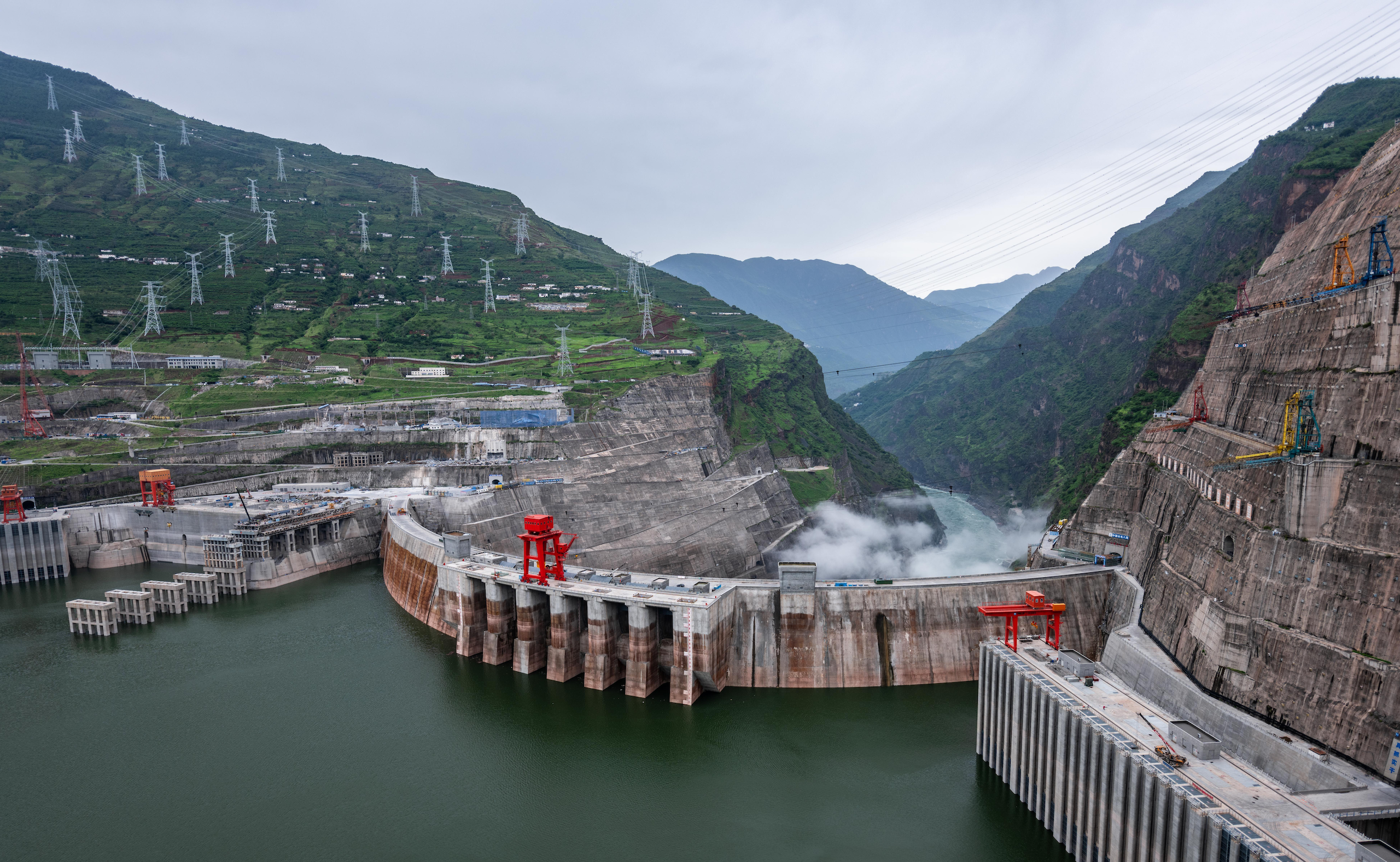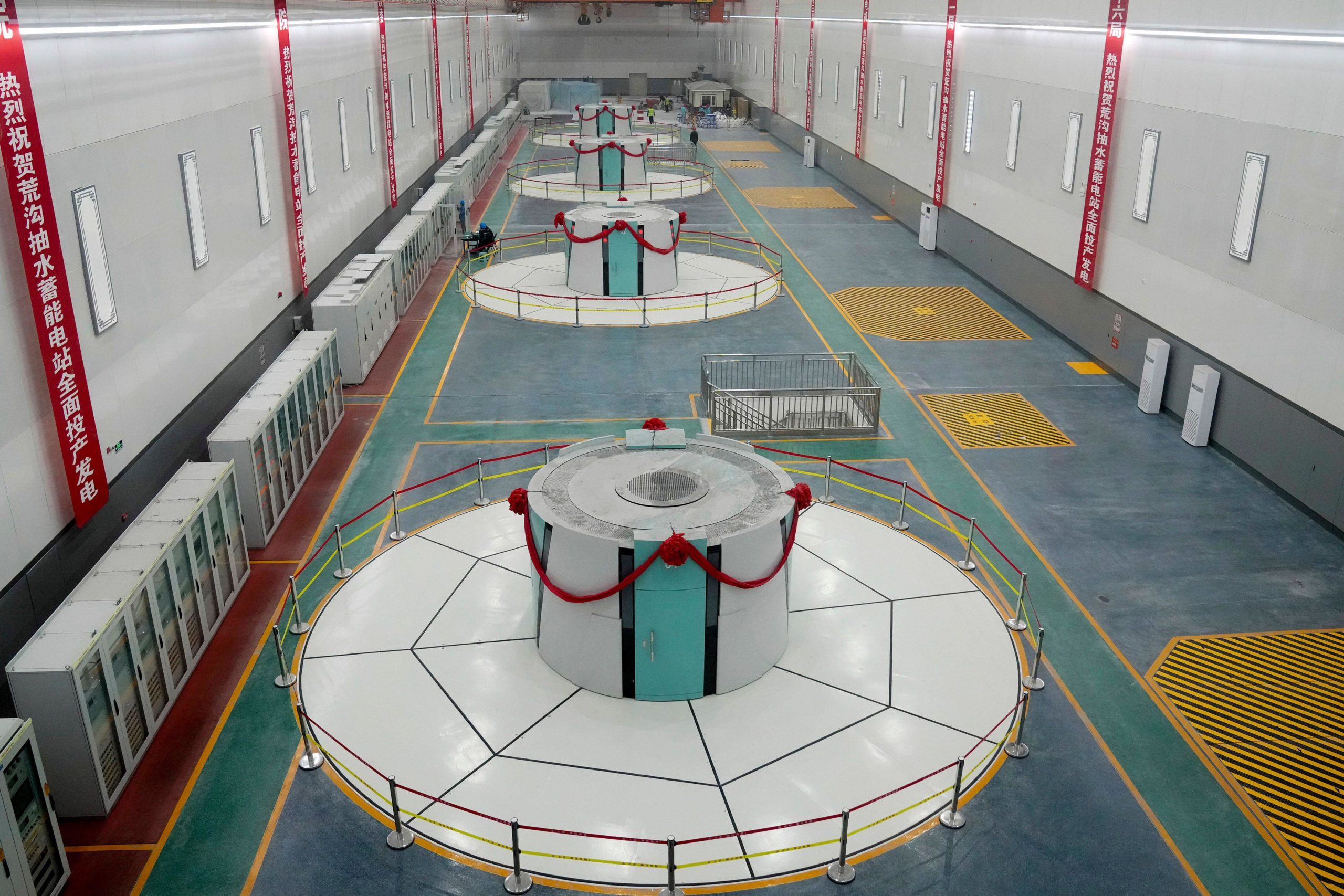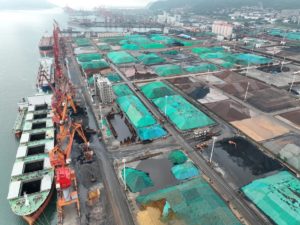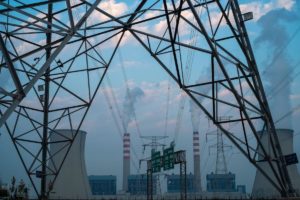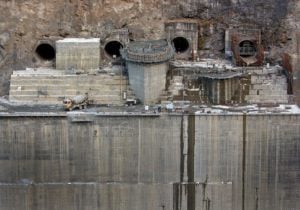China’s provincial-level jurisdictions (hereafter “provinces”) will focus on both coal and renewable power in the year ahead, according to work reports released ahead of the national Two Sessions. These, the country’s most significant annual political and legislative meetings, will begin on 4 March in Beijing.
More than two-thirds of the 31 provinces in mainland China have pledged to promote “clean” coal, to construct “advanced” coal power capacity, or to ensure coal supply. Seventeen plan to speed up building wind and solar farms or industrial parks, with more attention given to offshore wind.
Twenty-one want to develop “new types” of energy storage, while another 15 have plans for more pumped-storage hydropower.
The figures come from China Dialogue’s analysis of the government work reports published at this year’s provincial “two sessions”, which took place throughout January.
As a prelude to the national Two Sessions, the provincial conferences focus on instructions given by the central government in the last few months. The tasks found in the provincial plans can therefore herald the talking points of the national meetings.
Experts tell China Dialogue that these plans also show that provinces are taking actions to implement the “1+N” policy framework – China’s top-level plans for peaking carbon emissions before 2030 and achieving carbon neutrality before 2060.
The push for coal
At least 24 provinces have underscored the importance of coal-related work for 2023.
Provinces that traditionally produce energy plan to step up the “clean and highly efficient use of coal” and build more “advanced” or “intelligent” coal power plants or coal mines. They also want to bolster their coal-to-chemical industry.
For instance, Shaanxi, China’s third-largest coal producer in 2022, aims to begin building four new coal mines and produce a total of 750 million tonnes of coal this year, more than its output last year. It also aims to start the construction of more than 10 gigawatts (GW) of coal power capacity.
Meanwhile, Inner Mongolia, the second-largest coal producer last year, intends to extend its coal industry by “fast-tracking the planning of a batch of modern coal-to-chemical projects”. This includes an “industry demonstration zone” in Ordos, a city dubbed China’s “coal capital”.
Elsewhere, manufacturing and industrial hubs, such as Jiangsu, Zhejiang and Shandong, are looking to expand their coal power capacity, too.
Shandong, a leading GDP driver, plans to start building six large-scale “ultra-supercritical coal power projects”, a name given to more modern and efficient plants. The province already has the largest coal power capacity in China.
The central province of Hubei aims to accelerate the construction of two major coal power projects. One will be situated in Ezhou and have two 1-GW ultra-supercritical units, while the other in Suizhou will have two 660-megawatt (MW) ultra-supercritical units.
Experts say that these provincial actions match the central government’s directives to ensure economic stability and energy security, themselves a response to domestic power shortages in 2021 and 2022, and to a shifting global landscape on energy supply.
A key economic planning meeting presided by President Xi Jinping last December ordered all levels of governments to prioritise “stability” this year. It urged them to strengthen the domestic exploration and development of “important” energy and mineral resources, and increase reserves and production of such resources.
Yang Muyi is senior electricity policy analyst at Ember, a global energy thinktank. He told China Dialogue that the central government “for sure will not change” its overarching goal of achieving carbon neutrality before 2060. But he says energy transition is a “long and complex process”.
Renewable energy is yet to meet the demand growth every year, so we still need to use coalYang Muyi, Senior electricity policy analyst at Ember
“In the short term, the government will still need to meet growing power demands. That’s a very realistic problem,” Yang said. “Renewable energy is yet to meet the demand growth every year, so we still need to use coal.”
On coal-to-chemical facilities, Wu Wei, an assistant professor at the China Institute for Studies in Energy Policy at Xiamen University, told China Dialogue that the industry is “more competitive” than oil-to-chemical because of spiking costs of crude oil globally.
“Modern coal-to-chemical technologies, such as coal-to-olefins and coal-to-methanol, have significantly reduced its reliance on water resources, and their production processes are cleaner. Therefore, provinces that traditionally produce energy have started in droves to extend their industry chains downstream,” he explained.
Power shortages still looming
Last year, a summer of extreme heatwaves and drought led Sichuan and Yunnan, China’s two largest hydropower hubs, to face a succession of power shortages. It could happen again this year in Yunnan and become “even worse”, reported energy magazine Nengyuan.
Yunnan authorities imposed a new round of power reductions in February, the third since last September, due to drought, according to the publication. Electrolytic aluminium companies, which use a large amount of electricity to produce the metal, were required to reduce their power use by “up to 40%”, based on their already-reduced consumption last September.
Explaining the causes of Yunnan’s power shortage, the magazine pointed to shortcomings in planning in recent years: “On the one hand, the scale of hydropower in Yunnan continued to expand. On the other, [the Yunnan authorities] were hesitant to expand the scale of its thermal power. Eventually, this triggered an imbalance in the power system and thermal power failed to support the whole power system and meet the basic electricity demand.”
Yunnan plays a key part in sending hydropower to the Guangdong–Hong Kong–Macao Greater Bay Area in southern China, a densely populated urban and manufacturing centre.
In this year’s work report, the Yunnan provincial government says it will “speed up” building 4.8 GW of thermal power capacity, alongside starting on the construction of 15 GW of renewable capacity. It also pledges to promote the “clean and highly efficient use of coal” and to mine more than 71 million tonnes of it – 6.6% up from last year.
Complicating climate commitments
Yunnan’s case echoes the prevailing thoughts in China that building more modern coal power capacity can create a safety net for China’s energy transition as its grid gradually takes in more unstable and unpredictable renewable power.
According to a report jointly published by the Energy Foundation China and SinoCarbon Innovation & Investment, an ideal pathway for phasing out coal power would see China:
- Increase coal power capacity and control generation from 2021 to 2025;
- Control capacity and reduce generation from 2025 to 2030;
- Accelerate the retirement of coal power plants from 2030 to 2050;
- Have such plants act as a “strategic backup” from 2050 to 2060.
However, some experts have expressed concerns over China’s expanding coal fleet.
A new analysis jointly published by Global Energy Monitor and the Centre for Research on Energy and Clean Air says that “hundreds of brand-new coal power plants will make meeting China’s climate commitments more complicated and costly. The politically influential owners of the plants have an interest in protecting their assets and avoiding a rapid build-out of clean energy and a phase-out of coal.”
But the report notes the “massive additions” of new coal power capacity in China “don’t necessarily” mean that coal consumption or CO2 emissions from the power sector will increase, as long as the country’s non-fossil power generation continues to accelerate and electricity demand growth stabilises or slows down.
The analysis found that in 2022, Chinese provincial governments permitted the construction of 106 GW of new coal power capacity, the highest since 2015, and retired just 4.1 GW, down from 5.2 GW in 2021.
Seb Kennedy is head of data insights at TransitionZero, a London-based climate analytics firm. He told China Dialogue it is “unsurprising” that Chinese provinces are pushing for “advanced” and “clean” coal technologies because such language has appeared in official documents for the 14th Five Year Plan period (2021–25).
He said that, while China has shown “an impressive track record” for the production and deployment of renewable energy, “sadly, the country shows no signs of phasing out coal”. Last year, it added new coal generation capacity equaling 24.6 GW, once retirements have been subtracted, while the rest of the world achieved a net reduction of 9.4 GW, he noted.
“China’s clean coal strategy carries huge risks because these technologies are a very expensive way of achieving only marginal emissions savings,” Kennedy also cautioned. “There are better ways.”
“For example, our analysis shows that in 2020, mature renewable energy was already cost-competitive against most advanced coal technologies, including the cost of battery storage.”
A separate analysis by TransitionZero showed that China’s coal power “overcapacity” risks creating stranded assets – which lose their value or turn into liabilities before their designed lifetimes.
“Conversely, replacing the country’s coal fleet with clean energy alternatives could save US$1.6 trillion, highlighting the economic case for phasing out all coal and advanced and clean coal technologies,” Kennedy added.
Continuous boost for clean energy
Despite their push for coal, Chinese provinces also put wind and solar developments front and centre in their plans for 2023. The trend can be seen across the board, from traditional renewable powerhouses in the north-east and north-west to landlocked and coastal regions.
China is a dominant leader in wind and solar power globally. Latest statistics from its National Energy Agency show that the country’s cumulative wind power capacity had reached 365 GW by the end of 2022, more than a third of the 837 GW global total. The installed capacity of solar is 393 GW, also accounting for more than 30% worldwide.
All provinces… have laid out plans for large renewable energy basesWu Wei, assistant professor, China Institute for Studies in Energy Policy, Xiamen University
In fact, China’s renewable power capacity – which also includes nuclear and hydro power capacity – eclipsed its coal power capacity for the first time in 2022 after reaching 1,213 GW, according to Shanghai-based website Jiemian News, citing official figures.
On the policy level, the “Development Plan for Renewable Energy during the 14th FYP period” sent clear signals to provinces when it was released last June. It instructed them to “vigorously promote” the development of wind and solar bases, including those on land, in deserts and offshore.
As for this year, a few provinces’ plans for renewables have stood out. One of them is Ningxia, which generated the most solar power of all provinces in 2022, according to calculations by Beijixing, an energy industry website. Ningxia’s government says it will focus on the construction of 10 “large-scale” wind and hydro power bases, plus another 11 solar power farms, adding a total of 3 GW of renewable capacity.
In eastern China, Zhejiang province plans to connect 4 GW of wind and solar capacity to the grid – together with 2 GW of “clean” coal capacity. Shandong says it will push on building a sprawling, 14 billion yuan (US$2 billion) wind and solar base on a piece of saline tidal flat, which will eventually host 2.9 GW of solar and 100 MW of wind power capacity.
“China’s power demand centres concentrate in the east, whereas energy-producing centres are in the centre and north-west,” Xiamen University’s Wu said. “However, this situation is changing. All provinces want to seize the opportunities the energy transition could bring in the future, so they have laid out plans for large renewable energy bases.”
In particular, six provinces on the eastern and southern coast, plus the sea-facing municapility of Shanghai, have included offshore wind farms in their plans for this year, carrying forward the momentum of a multi-year rapid expansion of the technology. Last year, China overtook the UK as the world number one in offshore wind capacity.
Meanwhile, the landlocked province of Hunan wants to spearhead the manufacture of “super high power” wind turbines for offshore farms in deeper waters further from the coast.
“The development of offshore wind farms has been accelerating over the past few years, and places like Guangdong, Jiangsu and Shandong have all seen very fast progress,” Ran Ze, senior manager at the Environmental Defense Fund’s Beijing office, told China Dialogue. “This is because there has been a lot of development on land. In particular, there are already too many wind farms across the country’s north, which previously had overcapacity.”
Overall, China could add “at least” 570 GW of wind and solar power between 2021 and 2025 if all provincial and national targets are met, according to analysis published by Carbon Brief last May. These additions would more than double its installed wind and solar capacity over the 14th FYP period, the analysis noted.
Energy storage
Another policy hotspot for provinces is energy storage, which can help China’s “inflexible” power grid accommodate renewable power on a large scale.
The central government has published a number of relevant policy documents over the past two years, including a mid- to long-term development plan for pumped-storage hydropower from 2021 to 2035, and the sectoral 14th Five Year Plan for “new type” energy storage, which has catapulted the industry’s growth.
Pumped-storage hydropower refers to water being drawn from a lower reservoir to a higher one during off-peak hours, such as during the night, when there is plenty of spare electricity. Once power demand returns, the water is released through turbines to generate electricity.
“New type” includes all other energy story technologies, such as lithium batteries and hydrogen fuel cells.
For this year, 27 provinces have included either pumped-storage hydropower or “new type” energy storage technologies in their key tasks, and 12 have marked both.
For example, the vast, sparsely populated province of Qinghai, which has rich wind, solar and hydro resources, plans to start building three major pumped-storage hydropower stations and complete a “demonstration” energy storage project using compressed air.
Hubei, China’s third-largest hydropower hub after Sichuan and Yunnan, has plans for 11 pumped hydro storage projects while developing major industry parks for producing lithium batteries, in the cities of Wuhan and Xiaogan.
“Energy storage technologies, like hydrogen, battery storage, and pumped hydro are critical for improving the flexibility of the power system to deal with abrupt changes in renewable generation,” Ember’s Yang said.
“When China’s power system was built, it wasn’t built with lots of variable renewable energy in the grids. So it doesn’t have sufficient flexibility to manage abrupt changes in renewable generation,” he explained. Yang described China’s electricity system as being in “dire need of a major overhaul” to enable the country to transition towards clean energy, with the flexibility of the system “at the core” of this systemic change.
Hydrogen boom
Apart from energy storage, another common trend among provinces is their passion for hydrogen. China’s mid- to long-term plan for hydrogen power, published last year, instructed all levels of governments to “accelerate cultivating and developing the hydrogen power industry” to expedite China’s energy transition.
In total, 19 provinces plan to fast-track or deepen the development of their hydrogen industry in 2023.
Shandong and Chongqing aim to further popularise fuel cell electric vehicles, which are powered by hydrogen, while Guangxi intends to build more hydrogen filling stations. Inner Mongolia, Jilin and Ningxia will focus on producing “green hydrogen”, produced by splitting water into hydrogen and oxygen using renewable electricity.
Experts say that the hydrogen boom is driven by two factors. Firstly, central and western regions can use their extra renewable power, which cannot be sent to the east or consumed locally, to produce hydrogen. Secondly, hydrogen can help hard-to-abate sectors, such as iron and steel, to decarbonise.
Ran, of Environmental Defense Fund’s Beijing office, said that hydrogen energy should be used, first and foremost, in the sectors that would be hard to decarbonise through electrification, such as the industrial sector.
He noted that the hydrogen industry has been predominantly geared towards the transport sector in China, such as producing fuel cells and filling stations. Without government subsidies, he said, these efforts would be hard to keep economically viable.
But Ran pointed to risks for the industry: “Right now, the direction of investments and action plans [on hydrogen] in China tend to be similar to each other. Therefore, the domestic hydrogen energy industry is now facing the issue of homogenisation, as well as risks of overcapacity in the short term.”
Ran also cautioned that hydrogen is an “indirect greenhouse gas”, as it can react in the atmosphere with warming gases and increase their global warming potential. Therefore, hydrogen leakage – a scenario where hydrogen seeps into the atmosphere – can “counter” some of its climate benefits.
“We must also pay attention to the problem of hydrogen leakage and try to take measures to reduce it,” he said.


